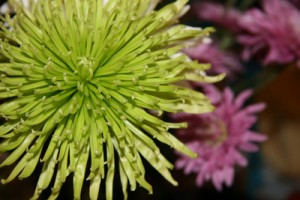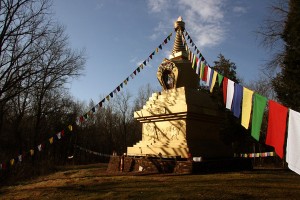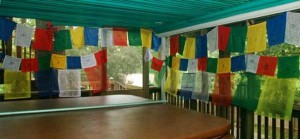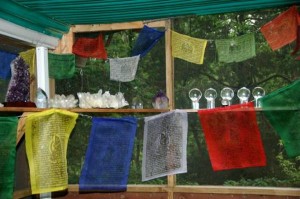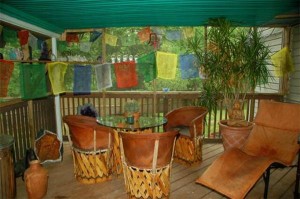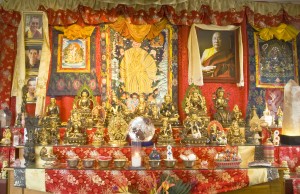An excerpt from the Mindfulness workshop given by Jetsunma Ahkon Lhamo in 1999
Oftentimes we run into this terrible, terrible, tragic separation in our lives, don’t we? Where this is this thing, and that’s the sacred. This is the life, and that’s the sacred. The way that we practice is by saying, “Okay, here’s how I’m doing on my path. I’ve got this practice and that practice and this practice, and I’ve accumulated 30,000 prostrations, so that’s how I’m doing on my path.” Then we have our lives, and we say, “Oh, am I making lots of money? Do I have a good family situation? Do I have good relationships, good friends? Do I have a good social life? Am I cool?” Mostly, “Am I cool? Am I in? Am I happening? Am I loved by everybody? Do I get enough approval? Do you all care for me enough?” We’ll say, “Okay, I’ll go practice Guru Rinpoche over here.” You visualize Guru Rinpoche in the sky with diamonds, right? You’re visualizing Guru Rinpoche in the sky like a cartoon, and you do that for 20 minutes or a half an hour, two hours, and that’s your practice. Then you walk out of that, and you forget everything. You forget everything. And then, in the rest of your life you think, “I’m not making enough money. How am I going to do this? How am I going to pay this bill?” And you get all tense and wound up and think, “I’ve got to run over here, I’ve got to run over there. I’ve got to have this relationship or that relationship.” So you’re okay with your practice, but stuff’s not going too well for you out here. Why do you think that is?
Here’s why it is: because Guru Rinpoche is not in your life because there is non-recognition. You are just floundering in a state of non-recognition. There can be no blessing if you’re not looking for it. There can be no recognition if you do not establish it. No one can shove it down your throat, and it’s not going to magically appear in front of you. If you do have a vision of some deity or something like that, that’s probably because you did well in your practice, but that doesn’t mean that you wait for the next time for the deity to show up before you think of the deity again. It’s up to us to make our life sacred.
As we are thinking, “Why don’t I have enough money, gotta get more money, gotta get a better job, gotta do this, that and the other thing, why isn’t this happening?” The Buddha taught you why this isn’t happening: you’re not practicing generosity. You’re not practicing bodhicitta, or at least in the past you did not practice generosity and bodhicitta, and so the seed that creates the fruit of prosperity was not there. Your opportunity, then, is to begin to practice generosity, to begin to practice bodhicitta in your ordinary life.
Start small. It’s best that way. Start small and work your way big because when we start small, we learn. It’s kind of like when you’re exercising, if you do a great, big, giant, heavyweight workout the first time, you’ll never do it again because the pain will kill you. You think, “I’ll never do this again.” and then you wait three weeks and by that time it’s all gone.
My suggestion is that you start to practice things like mindfulness and generosity in a small way. If you have two dollars, buy somebody a cup of coffee or something with one of them. If you have three dollars, give one of them to somebody that needs it more than you do, like the temple, or put it aside for a donation or something like that. Start in that small way, making that kind of generosity and offering part of your life to bring the sacred into your life. It also changes the actual conditions of your life, because really, according to the teachings, if we find that we are poor and then somehow we get a better job and maybe the money situation works out, that cure is not permanent. The poverty will return, either in this life, by you losing that job, or in a future life by the condition simply returning, and we may not understand why. That mindfulness, that spiritual distinction, has to be embedded in our lives.
© Jetsunma Ahkön Lhamo
